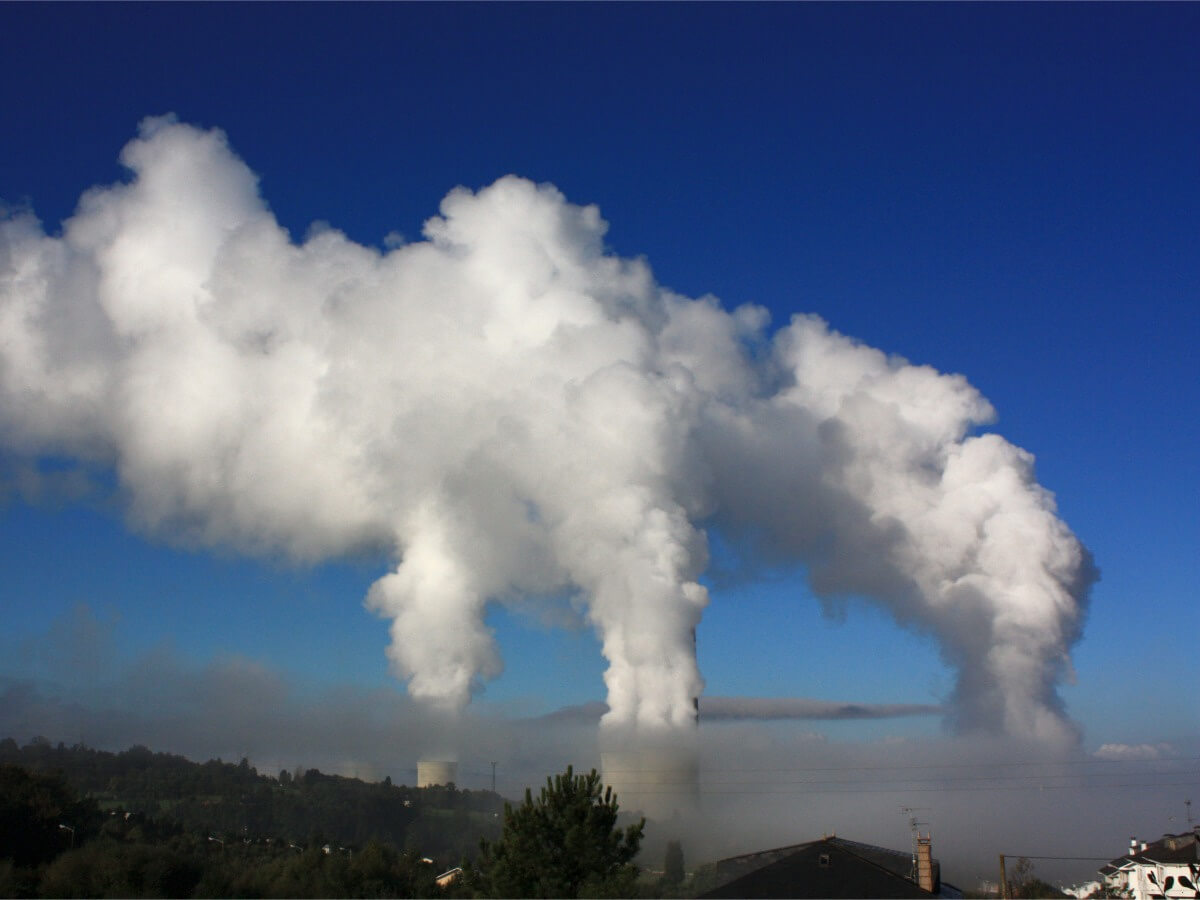Volatile Organic Compounds (VOCs)
With high vapor pressure and low water solubility, these compounds can experience evaporation under normal indoor atmospheric conditions of temperature and pressure. When left untreated, VOCs compromise air and water quality and lead to harmful health effects on humans and ecosystems.
The high vapor pressure of VOCs means they volatilize (evaporate) under ambient pressure and temperature. Once released into the atmosphere, VOCs can react with nitrogen oxides and carbon monoxide to produce ozone pollution – the United States most widespread outdoor air pollutant linked to health issues affecting cardiovascular and respiratory systems. Ozone pollution also depletes our ecosystems by damaging crops, trees, sensitive vegetation, and marine microorganisms, putting our food system at risk.
Common VOCs and Emission Sources
VOCs mostly come from industrial-level processes. They exist in industrial solvents, additives, or by-products from manufacturing and treatment plants. VOCs in the environment originate from gasoline and diesel emissions, wood burning, oil and gas extraction and processing, and industrial equipment emissions.
Examples of VOCs include, but are not limited to:
- Benzene
- Formaldehyde
- Methylene Chloride
- Tetrachloroethylene
- Toluene
- Xylene
- 1,3-Butadiene
Industrial Applications Which Emit VOCs
The manufacturing and industrial use of the products below require or create VOCs that subsequently emit into the atmosphere:
- Pharmaceuticals
- Microelectronics
- Building Materials
- Transportation Electrification
- Recovery & Recycling
- Ethylene Oxide Treatment
- Food Processing & Manufacturing
- Tank & Pipeline Degassing
- Metal Finishing
- Biofuels
- Petrochemical Processing
- Midstream
“Volatile organic compounds (VOC) means any compound of carbon, excluding carbon monoxide, carbon dioxide, carbonic acid, metallic carbides or carbonates, and ammonium carbonate, which participates in atmospheric photochemical reactions. (1) This includes any such organic compound other than the following, which have been determined to have negligible photochemical reactivity: methane; ethane… etc.”
– Volatile Organic Compounds Definition per 40 CFR Part 51.100(s)
The EPA regulates the emissions of VOCs to the outdoors to prevent the formation of ozone, a component of photochemical smog. Many VOCs create photochemical smog by reacting with nitrogen oxides (NOx) and carbon monoxide (CO) in the atmosphere while sunlight is present.
Furthermore, some states follow their own definitions and lists of exempted compounds, so it is vital to investigate if there are any local regulations in your area of operations.

A community is blanketed by a layer of dark grey smog while three industrial stacks discharge exhaust overhead
VOC Abatement Technology Options
VOCs are only one component contributing to air pollution, and the different sources producing these emissions make it difficult for one solution. Until we can figure out a way to create products without forming the VOCs themselves, industries will have to treat VOCs after they are used or generated. Industrial businesses can address VOC emissions by utilizing strategies that fit their specific application and operational needs.
- Recuperative Thermal Oxidizers – Ideal for Moderate VOC concentrations due to the heat exchanger component and the continuous steady state operating conditions
- Regenerative Thermal Oxidizers – Works well if the application has relatively low VOC loading in relation to a high exhaust flow rate that does not contain significant particulate or condensable matter (high volume, low VOC air streams)
- Enclosed Flares – Handles high VOC concentrations and typically acheives DRE in excess of 99%
- Wet Scrubbers – Appropriate for some applications depending on the required removal efficiency
- Catalytic Oxidizers – Accomplish oxidization at lower temperatures than straight thermal oxidation and appropriate in process applications with lower VOC concentrations

Tailored Solutions for your VOC Emissions
The proper solution for VOCs depends on the targeted pollutants that needs treatment; therefore, it is difficult to to say what system a facility needs without a detailed understanding of the application. Reach out to our technical sales group to understand the potential solutions based on your specific needs.

Glossary
The regulatory standards set for ozone pollution. VOCs chemically react with nitrogen oxides and sunlight to form ground-level ozone, so the current NAAQS determine the emission guidelines for VOCs.
The Clean Air Act is Title 40 of the Code of Federal Regulations (CFR) that identifies the national volatile organic compound emission standards for consumer and commercial products. This act requires the EPA to review and update the NAAQS accordingly. You can view the relevant section of this document at https://www.ecfr.gov/current/title-40/chapter-I/subchapter-C/part-59.
The EPA’s substance registry service allows you to learn more about the regulatory information associated with volatile organic compounds and relating substances.
Related Case Studies
Recuperative Thermal Oxidizer Reduces Fuel Costs for LFG Facility
An LFG facility receives significant energy savings by using a recuperative thermal oxidizer to destroy VOCs in their process stream. This solution incorporated two heat exchangers for additional energy saving benefits.
- Pollutant: Volatile Organic Compounds (VOCs)
- Industry: Recovery & Recycling
- System: Thermal Oxidizers
Solar Panel Manufacturing Facility Treats VOC Emissions With Catalytic Oxidizer
To maintain state and federal compliance, a solar panel manufacturer worked with Pollution Systems to get a Catalytic Oxidizer solution that was tailored to their business and operational needs.
- Pollutant: Volatile Organic Compounds (VOCs)
- Industry: Microelectronics
- System: Catalytic Oxidizers

